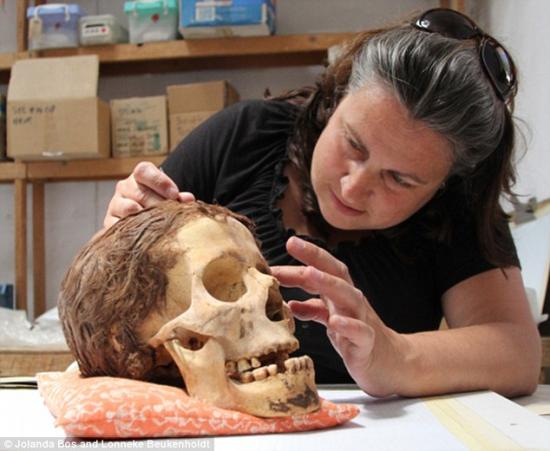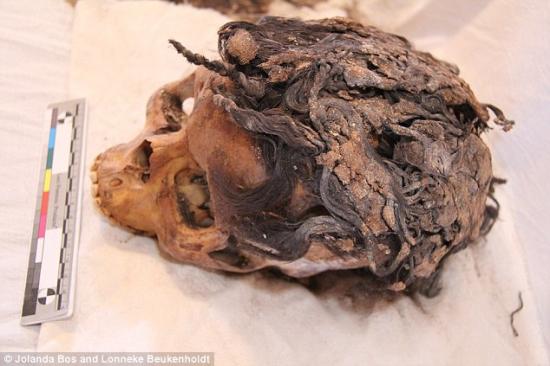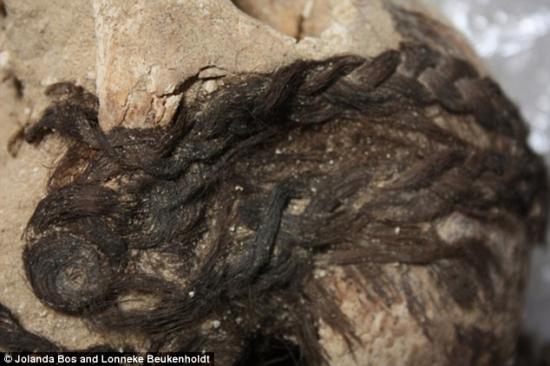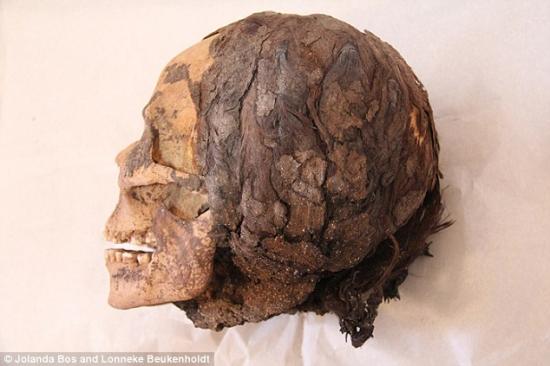Ellie Zolfagharifard
Source -http://www.dailymail.co.uk/sciencetech/article-2762537/The-way-Egypt-3-000-year-old-Amarnian-woman-unearthed-70-HAIR-EXTENSIONS-tied-intricate-layers.html#ixzz3Dmx4pH9c
The skull was one of hundreds found in the ancient city of Amarna
The skull was one of hundreds found in the ancient city of Amarna, many of which had their final hairstyles incredibly well-preserved using fat.
One skull had extensions made of grey and dark black hair suggesting a number of different people donated their hair to create the piece.
However, the latest intricate design of hair extension has left researchers on the Amarna Project baffled.
'Whether or not the woman had her hair styled like this for her burial only is one of our main research questions,' Jolanda Bos, an archaeologist working on the Amarna Project, told Owen Jarus at Live Science

'Whether or not the woman had her hair styled like this for her burial only is one of our main research questions,' Jolanda Bos (pictured), an archaeologist working on the Amarna Project, told Live Science

This skull was one of hundreds found in the ancient city of Amarna, many of which had their final hairstyles incredibly well-preserved using fat
'The hair was most likely styled after death, before a person was buried.
'It is also likely, however, that these hairstyles were used in everyday life as well and that the people in Amarna used hair extensions in their daily life.'
Out of 100 skulls analysed, 28 still had hair. The type of hair ranged from curly black to light brown and curly, suggesting some ethnic diversity in the region.
Skulls with in tact hair often had curls around their ears, and many also had braids.

One skull had extensions made of grey and dark black hair suggesting a number of different people donated their hair to create the piece
'All braids found in the coiffures were simple and of three strands, mostly 0.4 inches wide, with strands of approximately 0.2 inches (5mm) when tightly braided,' Ms Bos writes in the journal article.
People at Amarna also liked to keep their hair short. 'Braids were often not more than 7.9 inches (20cm) long, leaving the hair at shoulder length approximately,' Ms Bos added.
And it appears ancient Egyptian women used a similar technique to hide their greys. Some of the skulls shows evidence of a dye, possibly henna, used on hair.

Out of 100 skulls analysed, 28 still had hair. The type of hair ranged from curly black to light brown and curly, suggesting some ethnic diversity in the region. Pictured is the Egyptian lady with 70 hair extensions
THE YUMMY MUMMIES: HOW EGYPTIANS USED GEL AND CURLING TONGS
Ancient Egyptians used hair gel to style their locks in everyday life, researchers have found.
A study several years ago of male and female mummies has found fashion-conscious Egyptians made use of a fat-based product to keep their hair in place.
They used the styling gel on both long and short hair, tried to curl their hair with tongs and even plaited it in hair extensions to lengthen their tresses.
It is thought they used these methods in both life and death, with corpses being styled to make sure they looked good in the afterlife.
The incredible discovery was made by archaeological scientists who studied hair samples of 18 male and female mummies, aged from four to 58 years old.
Using light and electron microscopes, they found that nine of the mummies had coated their hair in the fatty substance, which is thought to be a beauty product.
Bizarrely, even in the artificially-preserved bodies the hair did not contain resins or embalming materials, suggesting the hair was styled separately to the mummification process.